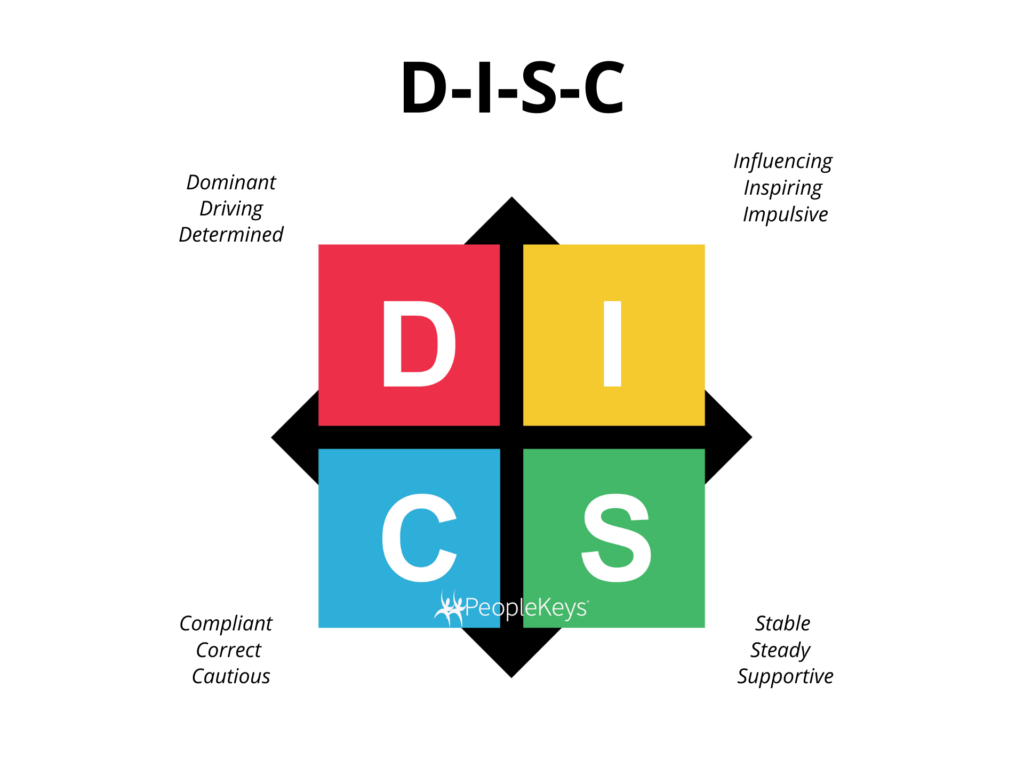What the DISC Measures:
D – Measures How a person Solves Problems & Responds to challenges
I – Measures How a person Attempts to Influence or Persuade others
S – Measures How a person Responds To Rules and Regulations
C – Measures the Pace at which a person Responds To Change
WHAT THE “D” MEASURES
Intensity:
The Higher the D value, the more active and intense an individual will be in trying to overcome problems and obstacles. The lower the D value, the greater the tendency to gather data prior to making a decision.
In an Antagonistic Environment:
The high D responds aggressively & directly.
Emotion:
The D factor measures the assertiveness. The D factor measures the emotion of anger. Those that score lower on the D graph are slower to anger. The higher a person scores on the D graph the more quickly they are to assert themselves.
The Higher the I value, the more verbal the person will be in persuading & influencing others to his/her way of thinking. The lower the I value, the more the person will use data and facts.
In an Antagonistic Environment:
The high I responds actively & may try to negotiate an agreement or apologize quickly.
Emotion:
The I factor measures the emotion of optimism. Those that score lower on the I graph tend to be more pessimistic. The higher a person scores on the I graph the more they are joyful and optimistic.
WHAT THE “S” MEASURES
The Higher the S value, the more the person prefers to start and complete one project at a time. Also, the higher the S, the more resistant to change. The lower the S value, the faster the pace, and the greater is the desire for change.
In an Antagonistic Environment:
The high S responds passively & seeks to blend into situations.
Emotion:
The S factor measures emotional expression. Those that score lower on the S graph are more expressive a person is of their emotions. The higher a person scores on the S graph the more difficult it is to read an individual.
WHAT THE “C” MEASURES
The Higher the C value, the more the person will comply with rules set by others. The lower the C value, the more an individual will challenge rules and seek independence.
In an Antagonistic Environment:
The high C responds passively/aggressively & seeks to justify their actions.
Emotion:
The C factor measures caution. Those that score lower on the C graph the more fearless the individual. The higher a person scores on the C graph the more an individual cautiously and analytically moves forward.

MICHELE BURCH REID, MS FOUNDER OF LCI
More From Michele
Extraverted Feeling (FE)
Extraverted Feeling (FE) ESFJ - ENFJ The function is making decisions based on the value system that is concerned with the well-being of people. These values are more global and cultural than personal. The goal is to maintain group harmony. For...
Introverted Thinking (TI)
Introverted Thinking (TI) ISTJ - INTJ The function is making decisions based on data, categories, and theories inside your mind. Analyzing & comparing systems with others make improvements. For example:The function is making decisions based on data,...
Extraverted Thinking (TE)
Extraverted Thinking (TE) ESTJ - ENTJ The function is making decisions about the external world using objective facts. Applies criteria in a logical way while staying within the rules and policies to arrive at a defendable position or decision. For...









